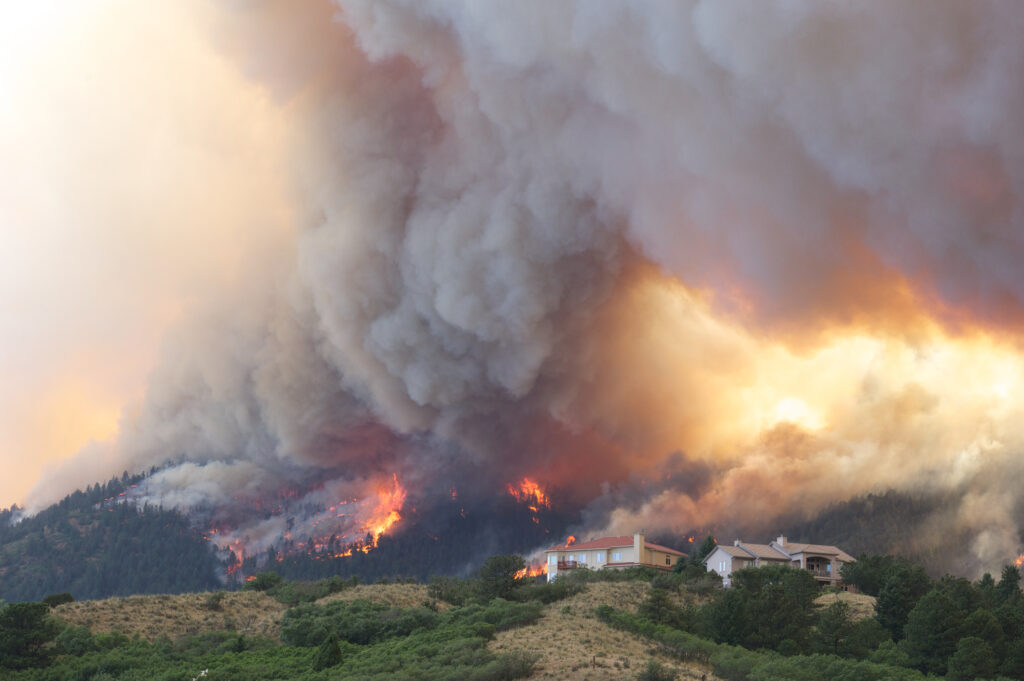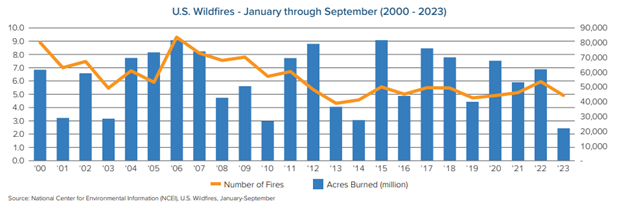
With record-breaking wildfires making headings recently, it might be unexpected to find out that U.S. wildfire frequency and intensity for in 2023 are on track to be the most affordable in the previous 20 years. In truth, the pattern has actually been usually downward because 2000, according to a just recently released Triple-I Concerns Short

In spite of devastating losses in Washington State, Hawaii, Louisiana, and in other places, California– a state frequently thought about associated with wildfire– remains in the middle of its 2nd moderate fire season in a row. This might be because of drought-breaking rains and snows, however Texas is experiencing less wildfires than in 2022, in spite of aggravating dry spell conditions. About 37 percent of the continental U.S. stays under some kind of dry spell, according to the U.S. Dry Spell Display
At the very same time, Swiss Re reports that wildfire’s share of insured natural disaster losses has actually folded the previous thirty years. How can those patterns be fixed up? A minimum of part of the response lives in population patterns– particularly, growing varieties of individuals picking to reside in the wildland-urban user interface (WUI), the zone in between empty and industrialized land, where structures and human activity intermingle with vegetative fuels.
Mitigation is essential– however not adequate
The enhancements in frequency and intensity are most likely due to financial investments in mitigation. State and regional authorities have actually invested greatly to reduce the human reasons for wildfire. In addition, the federal Facilities and Jobs Act of 2021 consisted of billions to support wildfire-risk decrease, house owner financial investment in mitigation, and enhanced responsiveness to fires. More just recently, the Biden Administration revealed $185 million for wildfire mitigation and durability as part of the Buying America Program, which need to assist continue the decreases in frequency and intensity.
However with more individuals residing in the WUI– almost 99 million, or one third of the U.S. population, according to the U.S. Fire Administration — more than 46 million homes with an approximated worth of $1.3 trillion are at danger.
According to the 2022 Yearly Report of Wildfires produced by the National Interagency Fire Center (NIFC), 68,988 wildfires were reported and 7.5 million acres burned in 2022. Of these fires, 89 percent were brought on by human activity and burned 55 acres per fire. By contrast, the 11 percent of fires brought on by lightning led to approximately 563 acres burned, 10 times more than human-caused fires.
This distinction might clarify why the variety of fires has actually been reducing more drastically than acres burned. Even more, population shifts into the WUI are increasing the distance of residential or commercial property to locations vulnerable to fire, assisting to describe the increase in wildfire’s increased portion of insured losses.